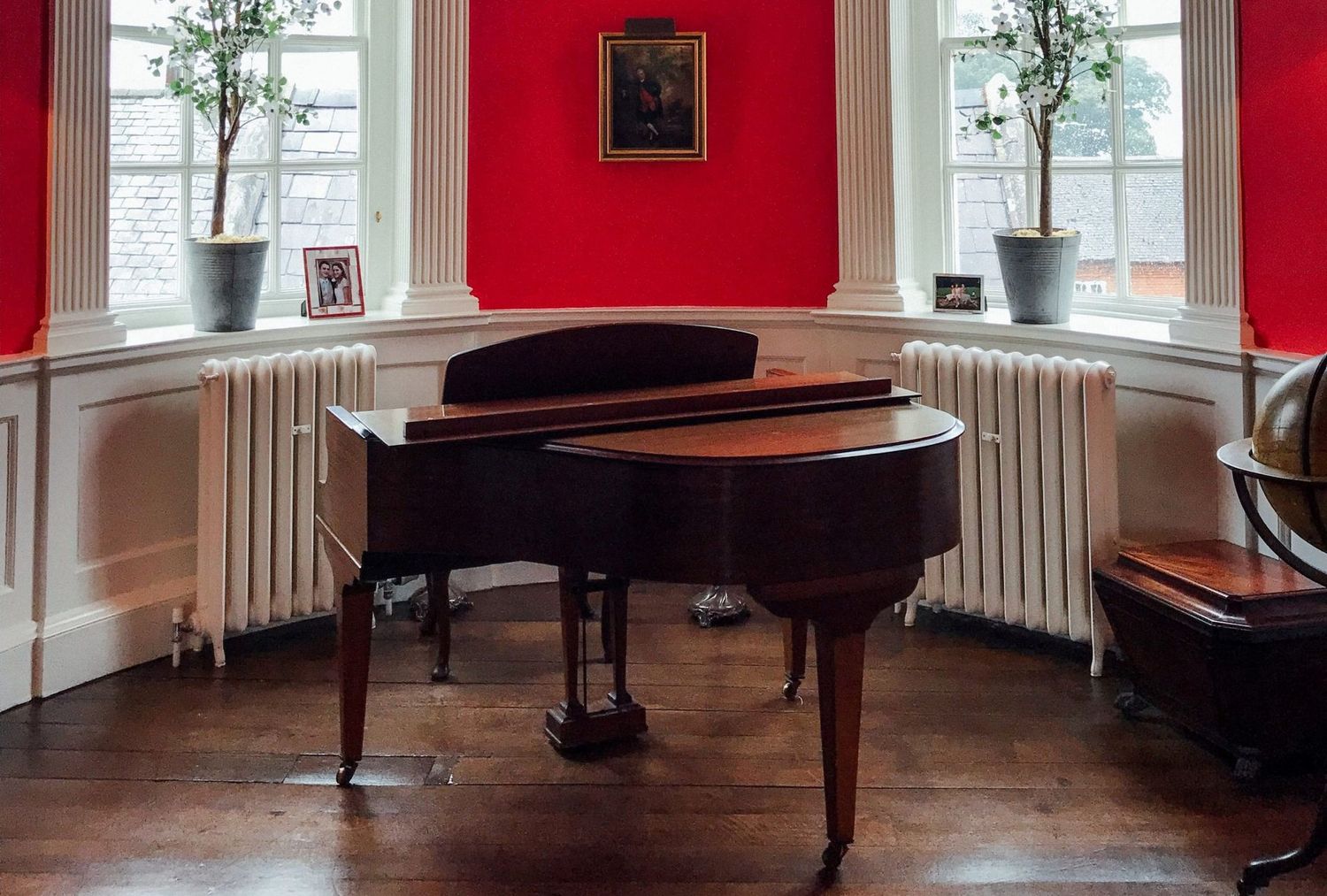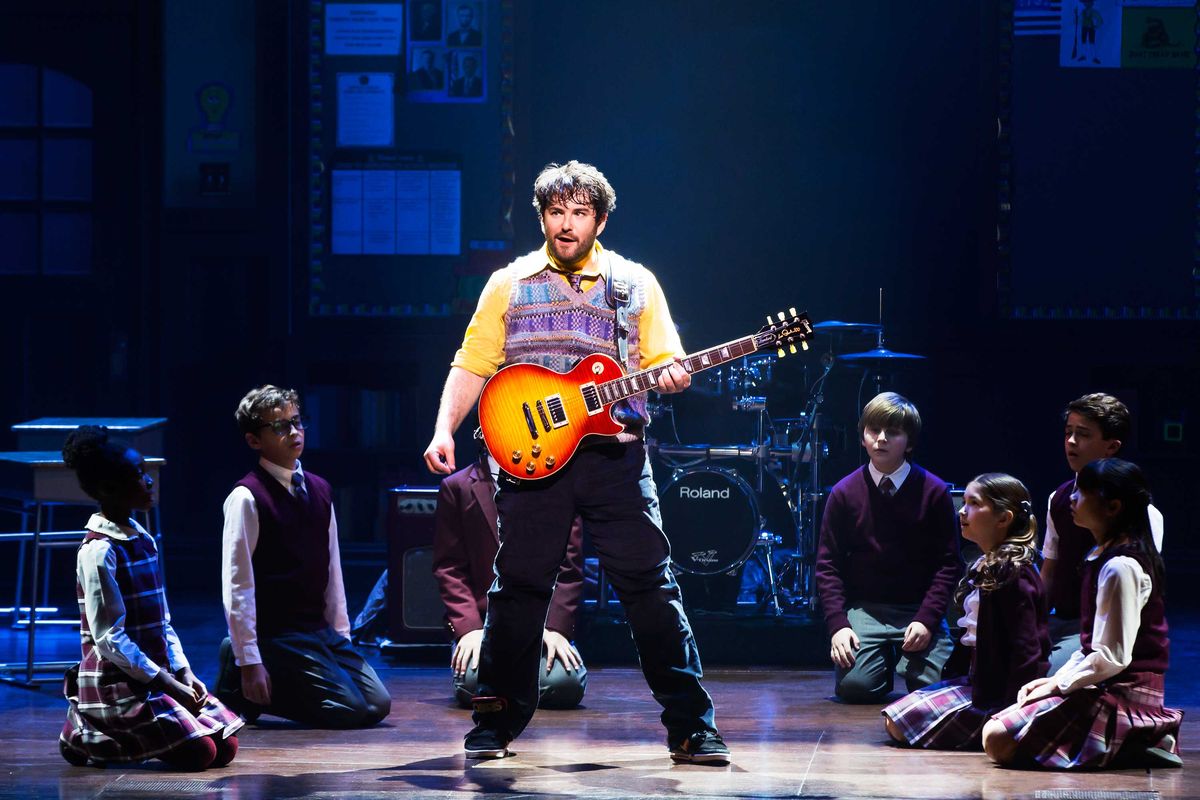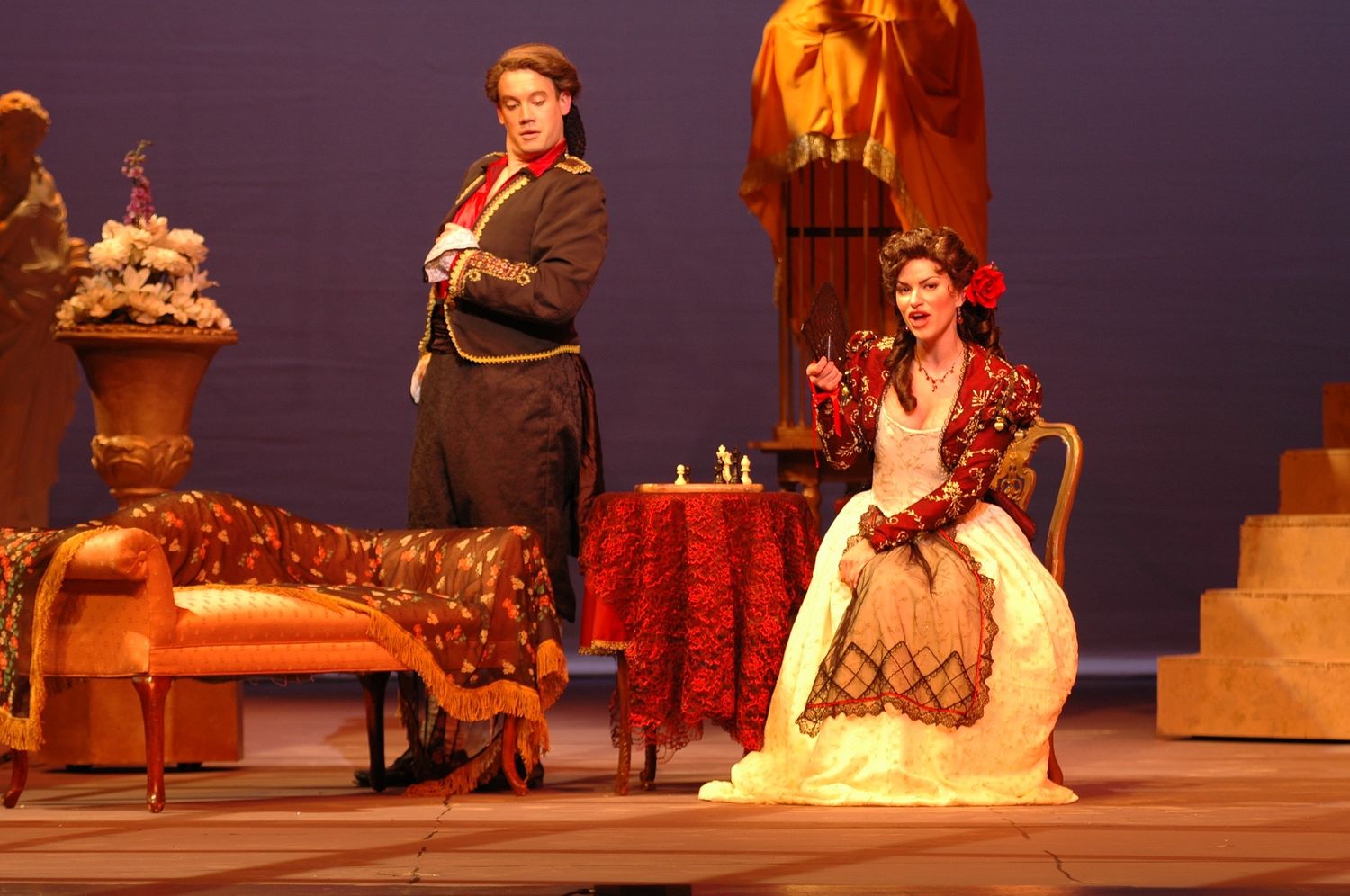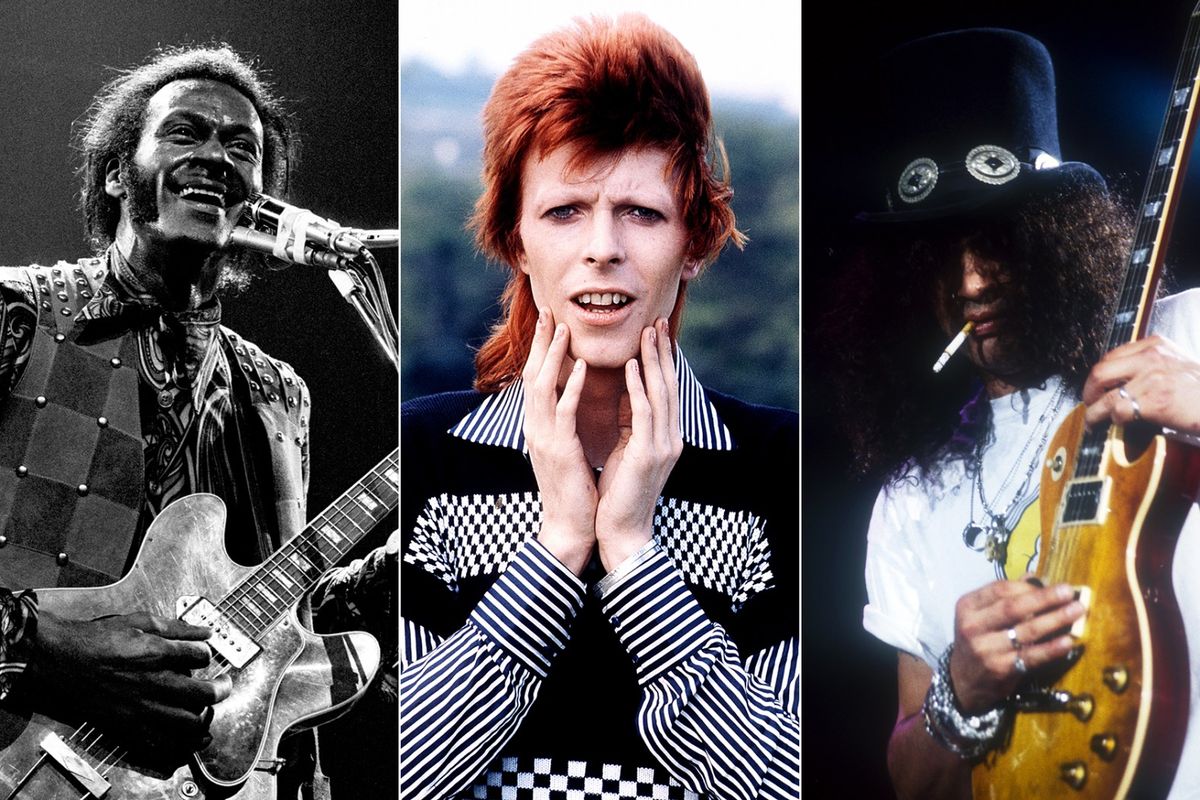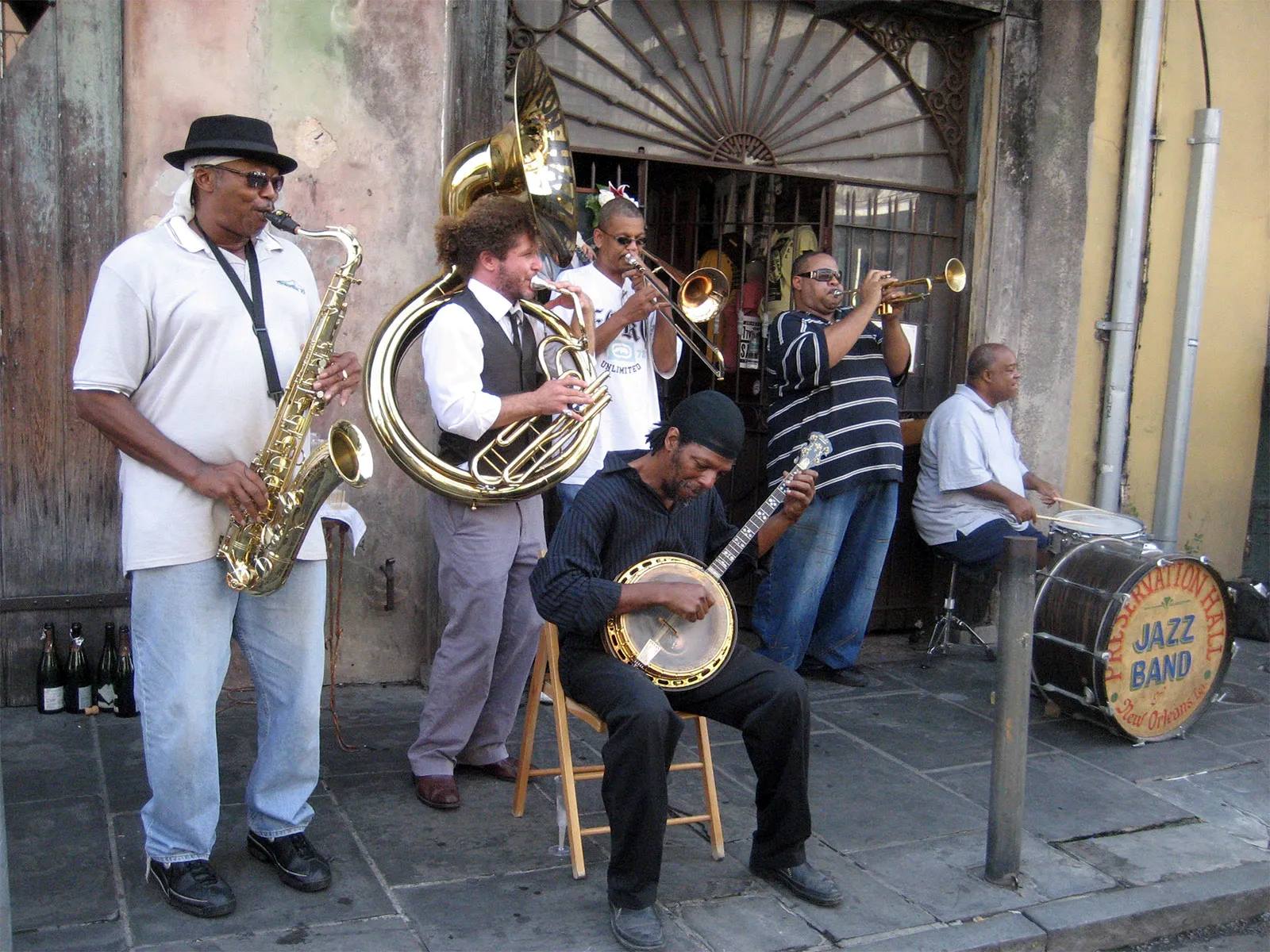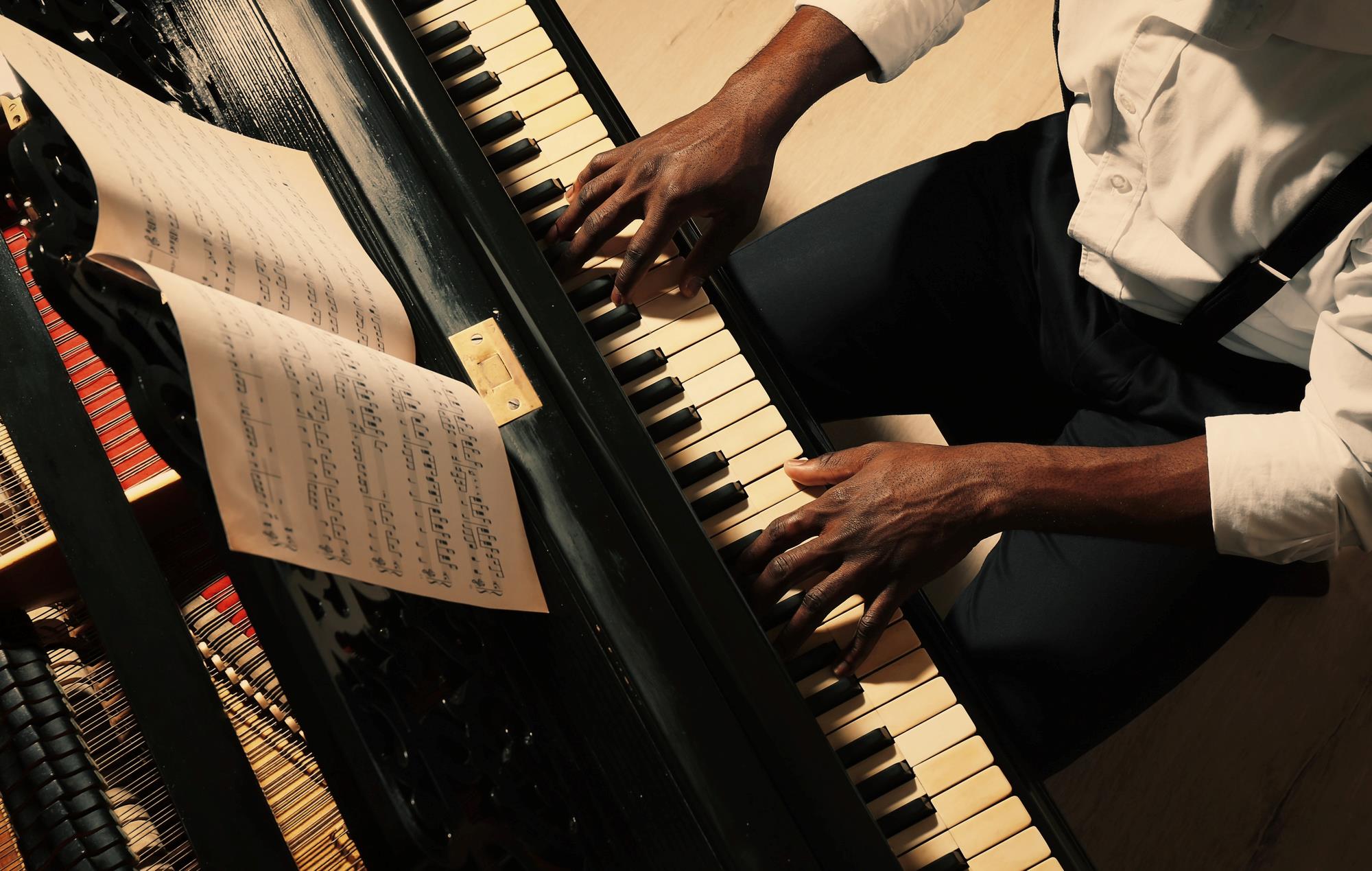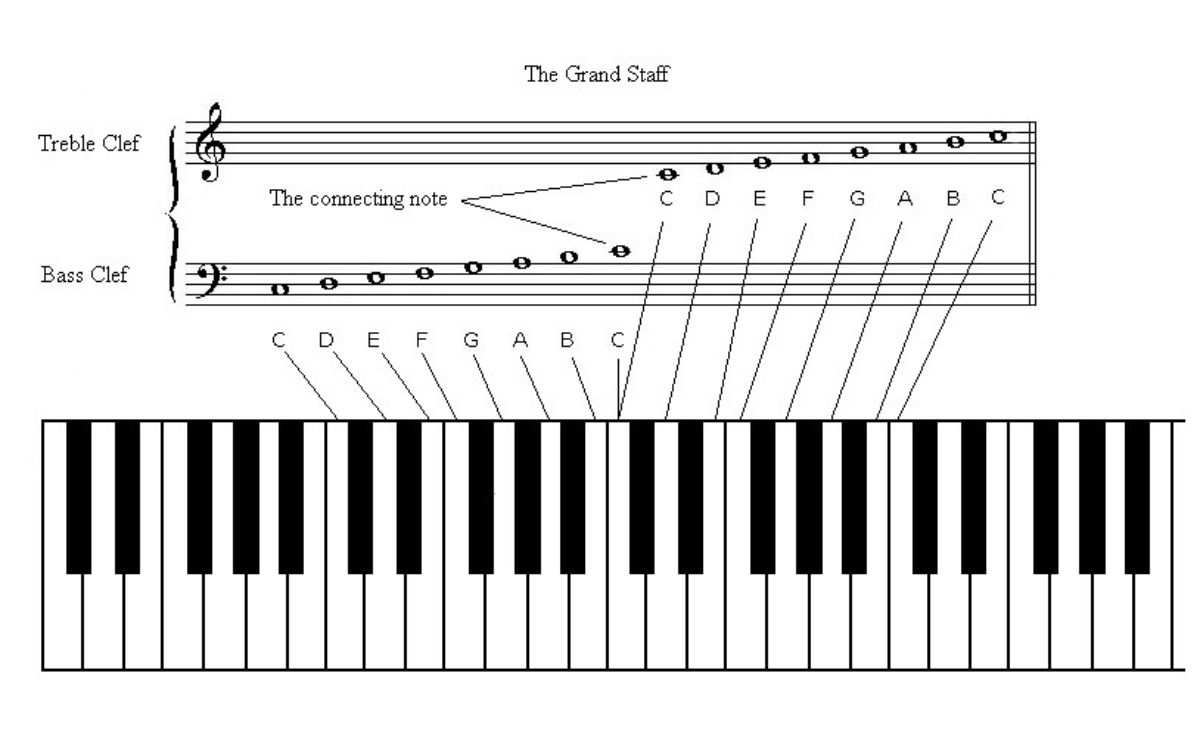Home>Genres>Jazz>What Aspect Of Swing Set It Apart From Other Forms Of Jazz?
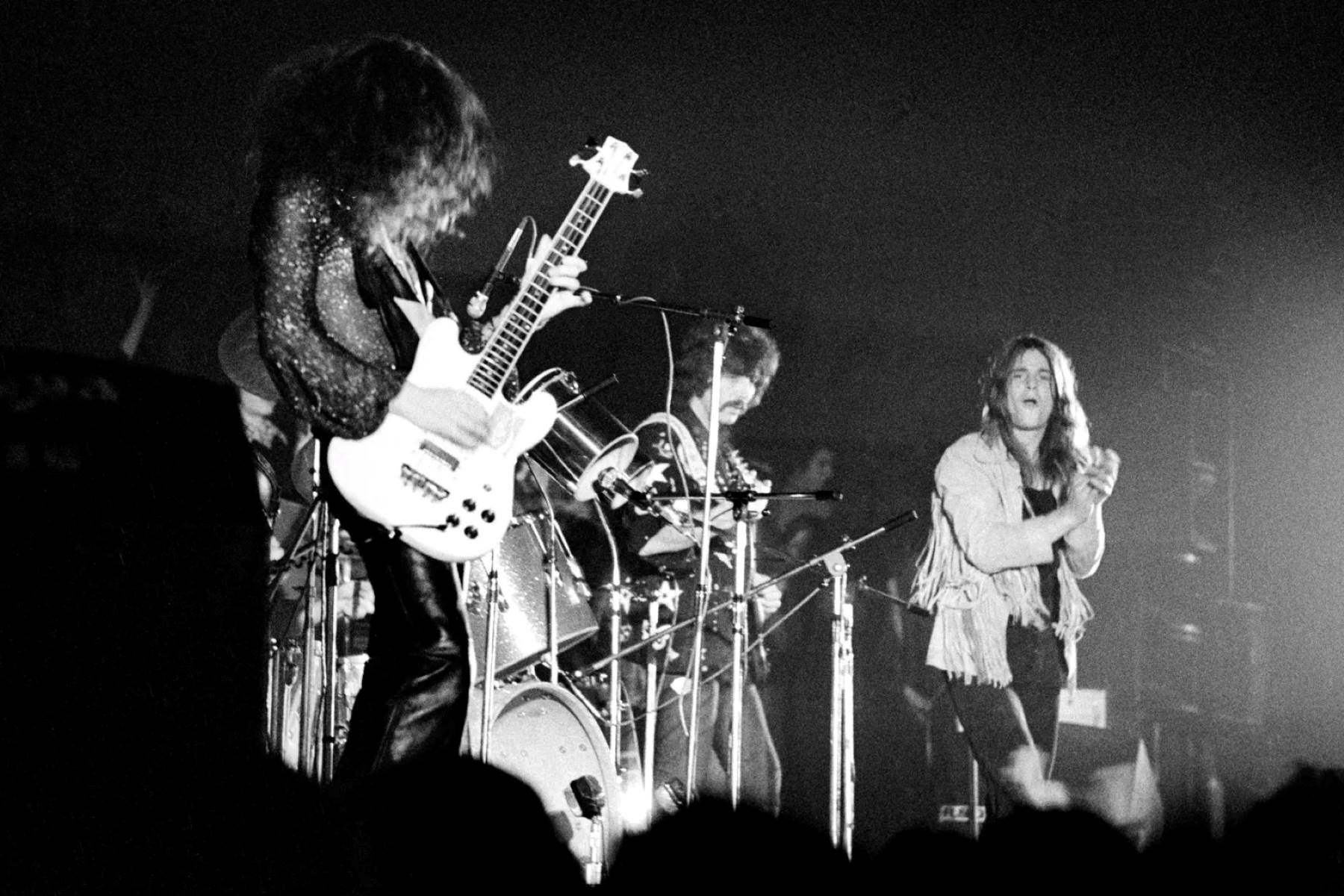

Jazz
What Aspect Of Swing Set It Apart From Other Forms Of Jazz?
Modified: February 24, 2024
Discover the unique aspects of swing in the world of jazz, setting it apart from other forms. Explore the rhythmic and improvisational nature of this iconic genre.
(Many of the links in this article redirect to a specific reviewed product. Your purchase of these products through affiliate links helps to generate commission for AudioLover.com, at no extra cost. Learn more)
Table of Contents
Introduction
Swing jazz, often referred to simply as “swing,” is a distinct style of jazz music that emerged in the early 1930s and reached its peak popularity during the swing era of the late 1930s and early 1940s. This dynamic and infectious genre captivated audiences with its vibrant energy, infectious rhythms, and exuberant improvisation.
What sets swing apart from other forms of jazz is its emphasis on a syncopated rhythm and a distinct rhythmic feel known as “swinging the beat.” This unique rhythmic quality, combined with its lively danceable tunes and high-energy performances, made swing jazz the soundtrack of the swing dance craze that swept across the United States and left an indelible mark on the cultural landscape.
Swing jazz was fueled by the innovative musicians of the time, such as Benny Goodman, Duke Ellington, Count Basie, and many more. These artists pushed the boundaries of jazz by incorporating elements of blues, ragtime, and African-American spirituals, giving birth to a new style that was infectious, enthusiastic, and instantly recognizable.
In this article, we will delve into the origins of swing, explore its distinct characteristics, and examine the impact and legacy it has left behind in the world of jazz music. From the syncopated rhythms to the unique instrumentation, swing jazz continues to captivate audiences with its timeless appeal and unmatched energy.
Origins of Swing
The roots of swing can be traced back to the late 19th and early 20th centuries, where African-American musicians played a significant role in the development of jazz music. The rhythmic influences of African music and the melodic elements of European music blended together, creating a unique and vibrant sound.
During the 1920s, jazz began to evolve from its early forms, such as Dixieland and ragtime, into a more sophisticated and complex style. It was during this period that influential musicians like Louis Armstrong and Duke Ellington emerged, bringing their innovative ideas to the forefront of the jazz scene.
By the early 1930s, a distinct style known as swing started to take shape. It was characterized by its energetic rhythm, emphasis on improvisation, and a strong focus on arranging and orchestration. The popularity of swing spread rapidly, fueled by live performances, radio broadcasts, and the emergence of record labels.
One of the major catalysts for the rise of swing was the formation of big bands, which included brass and woodwind sections along with a rhythm section. These large ensembles provided a rich and dynamic sound, perfectly suited for both dancing and listening.
Swing music also found a home in the ballrooms and dance halls of the era, where people would gather to socialize and move to the infectious beats. The swing dance craze took hold, with signature dances like the Lindy Hop and Jitterbug becoming immensely popular.
The contributions of key figures such as Benny Goodman, Count Basie, and Chick Webb cannot be overlooked. Goodman, known as the “King of Swing,” rose to fame with his iconic band and performances at the Palomar Ballroom in Los Angeles, where he attracted throngs of enthusiastic fans.
The swing era reached its peak during the 1930s and early 1940s, with bands like the Count Basie Orchestra and the Duke Ellington Orchestra creating timeless recordings that are still revered today. However, the advent of World War II brought significant changes to the world of music, as many musicians enlisted, and the focus shifted to smaller ensembles and new styles like bebop.
Although the swing era may have come to an end, its influence and legacy continue to resonate in the world of jazz and popular music. The swinging rhythm, infectious melodies, and exuberant energy of swing jazz remain as a testament to its enduring appeal and timeless charm.
Characteristics of Swing Jazz
Swing jazz is characterized by several distinctive features that set it apart from other forms of jazz and make it instantly recognizable to listeners. These characteristics contribute to the vibrant and infectious energy that defines swing music.
1. Syncopation and Rhythmic Feel: Swing jazz is known for its syncopated rhythms, where accents are placed on offbeats. This rhythmic complexity adds a lively and energetic feel to the music, making it impossible to resist tapping your feet or moving to the beat.
2. Swinging the Beat: A key feature of swing jazz is the concept of “swinging the beat.” It refers to the rhythmic style where the musicians displace the eighth-note pulse, creating a relaxed and loose feel to the music. This swinging rhythm is achieved through the use of a technique called “shuffle feel,” where the eighth notes are played as long-short patterns.
3. Call and Response: Swing jazz often incorporates call and response elements, where a musical phrase is played by one section of the band and answered by another section or an individual instrument. This interactive and engaging musical conversation adds excitement and variety to the music.
4. Improvisation and Soloing: Like other forms of jazz, swing provides ample opportunities for improvisation. Musicians take turns showcasing their skills through improvised solos, adding a sense of individual expression and spontaneity to the music. Soloing is a defining aspect of swing, with instrumentalists showcasing their virtuosity and creativity.
5. Unique Instrumentation: Swing bands typically feature a large ensemble with a diverse range of instruments. The brass section, including trumpets and trombones, provides bright and brassy tones, while the woodwind section, including saxophones and clarinets, adds warmth and richness. A rhythm section comprising a piano, bass, and drums provides the foundation and drive for the music.
6. Upbeat and Danceable Tunes: Swing jazz is known for its catchy and upbeat melodies that are perfectly suited for dancing. The lively and energetic tunes of swing, often featuring a memorable chorus, encourage listeners to embrace the joy and exuberance of the music.
These characteristics combined create the signature sound that defines swing jazz. Whether it’s the infectious rhythm, the compelling solos, or the irresistible melodies, swing jazz continues to captivate audiences around the world, allowing them to experience the thrill and excitement of the swing era.
Syncopation and Rhythmic Feel
A defining characteristic of swing jazz is its intricate and infectious rhythmic patterns created through syncopation. Syncopation refers to emphasizing the weaker beats of a musical measure, creating unexpected accents and giving the music a distinctive and lively feel.
In swing jazz, syncopation is used to create a swinging rhythmic feel that sets it apart from other genres. The rhythmic complexity and offbeat accents contribute to the vibrant energy and infectious groove of swing music.
One of the key elements of syncopation in swing jazz is the use of swung eighth notes. This means that instead of playing the eighth notes evenly, musicians elongate the first part of the note and shorten the second part, creating a “long-short” rhythmic pattern. This swinging rhythm gives the music a relaxed and loose feel, making it incredibly danceable and enjoyable.
Swing music often employs a technique called “shuffle feel,” where the eighth notes are played with a triplet subdivision. This creates a rhythmic pattern where the first note of the triplet is longer, and the following two notes are shorter. This shuffle feel adds a bouncy and syncopated groove to the music, making it impossible to resist moving to the beat.
Syncopation in swing jazz is not limited to the rhythm section. It is also prominently featured in the melodic lines played by the horn sections and other instruments. Musicians add unexpected accents and offbeat notes, creating a sense of anticipation and excitement in the music.
The rhythmic feel of swing jazz is characterized by its driving pulse and infectious groove. Musicians navigate through complex rhythmic patterns with ease, creating a seamless flow of syncopation that keeps the music alive and engaging.
Swing jazz also incorporates elements of call and response, where one section of the band plays a musical phrase, and another section responds with a complementary phrase. This back-and-forth interaction adds a dynamic and interactive element to the rhythmic feel, creating a sense of conversation within the music.
Syncopation and the swinging rhythmic feel are essential components of swing jazz that give it its unique and infectious quality. From the driving pulse to the unexpected accents, swing music invites listeners to tap their feet, dance, and immerse themselves in the joyous and lively world of swing jazz.
Swinging the Beat
One of the defining characteristics of swing jazz is the concept of “swinging the beat.” This refers to the rhythmic style employed by musicians in swing music that creates a relaxed and infectious groove. “Swinging the beat” gives swing jazz its distinct rhythmic feel and sets it apart from other genres of music.
In swing jazz, the beat is “swung” by subtly altering the timing of the eighth-note subdivisions. Rather than playing them evenly, musicians stretch the first part of the note and shorten the second part, resulting in a rhythmic pattern that has been described as a “long-short” feel.
The swinging rhythm is achieved through a technique known as shuffle feel. This technique involves playing eighth notes with a triplet subdivision, where the first note of the triplet is held longer, and the following two notes are played shorter. This rhythmic pattern adds a sense of bounce and syncopation, creating an irresistible groove that compels listeners to move and dance.
Swing musicians are masters of manipulating the beat and syncopation. They have a remarkable ability to play slightly behind or ahead of the beat, adding a natural and organic feel to the music. This subtle push and pull of the tempo give swing its relaxed yet energetic quality, making it a joy to listen to and dance along with.
Swinging the beat is not just limited to the rhythm section of the band. It is an integral part of the entire ensemble, including the brass, woodwinds, and even the soloists. Each musician contributes to the swinging feel by adding their own variations and interpretations, creating a cohesive and dynamic sound.
The swinging rhythm in swing jazz creates a sense of momentum and forward motion. It invites listeners to tap their feet, nod their heads, and engage with the music on a physical level. The infectious groove of swing jazz is what made it so popular during the swing era, as people flocked to dance halls and ballrooms to experience the exhilarating rhythm firsthand.
Swinging the beat is a fundamental aspect of swing jazz that gives it its distinctive feel and sets it apart from other forms of jazz music. The combination of syncopation, shuffle feel, and the mastery of timing creates a rhythmic tapestry that is both complex and accessible, making swing jazz a timeless and irresistible genre.
Call and Response
Call and response is a fundamental element in many styles of music, and swing jazz is no exception. It is a technique employed by musicians in which one section of the band or one instrument plays a musical phrase, known as the “call,” and another section or instrument responds with a contrasting phrase, known as the “response.” This musical conversation adds excitement, interplay, and dynamic variation to the music, making it a defining characteristic of swing jazz.
Call and response can be observed in various aspects of swing jazz, from the melodies played by the horn sections to the improvisational exchanges between soloists and the rhythm section. It serves as a means for musicians to interact, engage with one another, and create a sense of narrative within the music.
In swing jazz, call and response is often seen between the different sections of the band, such as the brass section and the saxophones. The brass section may play a bold and declarative phrase, setting up a musical question, which is then answered by the saxophones in a contrasting and melodic response. This back and forth between sections creates a sense of dialogue, adding excitement and tension to the performance.
Improvisation, a hallmark of jazz music, also incorporates call and response. When a soloist takes center stage to deliver a spontaneous and personal musical statement, the rhythm section and other musicians act as the responsive voices, echoing and reacting to the ideas presented by the soloist. This interaction creates a sense of collaboration and shared musical exploration.
Call and response in swing jazz serves multiple purposes. It adds structure and organization to the music, breaking it into distinct sections and offering contrast. It also allows musicians to showcase their technical skills, creativity, and ability to listen and respond in real-time.
From a listener’s perspective, call and response in swing jazz keeps the music engaging and dynamic. It creates anticipation and surprise, as the call sets up a musical question that the response answers. This interplay between different musical voices adds depth and complexity to the music, keeping listeners captivated and actively involved in the performance.
Call and response has deep roots in African and African-American musical traditions and has been carried forward into various genres, including swing jazz. It is a testament to the collaborative and interactive nature of music-making, highlighting the importance of listening, responding, and engaging with fellow musicians. From the early big band swing orchestras to modern ensembles, call and response continues to be a vital element that adds vitality and spirit to swing jazz performances.
Improvisation and Soloing
One of the defining features of swing jazz is the art of improvisation. Improvisation is the spontaneous creation of music on the spot, and it plays a central role in the world of jazz. Swing jazz musicians are known for their exceptional improvisational skills, and the ability to take a melody or chord progression and transform it into something unique and personal.
In swing jazz, improvisation is commonly seen during solos. When a musician takes a solo, they step forward from the ensemble and have the opportunity to showcase their individual creativity and musicality. Whether it’s a trumpet player, a saxophonist, or a pianist, each soloist brings their own style, ideas, and personality to the forefront.
Soloing in swing jazz is often characterized by dynamic and virtuosic playing. Musicians unleash their melodic ideas, rhythmic variations, and expressive techniques, captivating the listeners with their technical prowess and emotional depth. The soloist becomes the focal point of attention, and their improvisations shape the direction and energy of the music.
Soloing in swing jazz is not limited to the melody. It also involves reharmonization and melodic embellishments. Musicians may choose to alter the chord progressions, substitute different chords, or add chromatic passing tones to create tension and resolution. These harmonic choices not only demonstrate the knowledge and understanding of music theory but also contribute to the overall excitement and unpredictability of the solo.
Another aspect of improvisation in swing jazz is the interaction between the soloist and the rhythm section. The rhythm section, comprising piano, bass, and drums, provides a solid foundation for the soloist to explore and experiment. The rhythmic exchanges, syncopated accents, and responsive interactions between the soloist and the rhythm section create a lively and dynamic musical conversation.
Improvisation in swing jazz is an ongoing dialogue between tradition and innovation. While swing musicians pay homage to the established vocabulary and stylistic elements of the genre, they also strive to push the boundaries and bring their own unique voices to the forefront. This balance between tradition and personal expression allows for the continuous evolution and growth of swing jazz.
Swing jazz has produced some legendary improvisers, such as Charlie Parker, Lester Young, and Lionel Hampton, who have left an indelible mark on the genre. Their innovative and daring solos paved the way for future generations of musicians and continue to inspire and influence swing jazz to this day.
Improvisation and soloing in swing jazz provide a platform for individual expression, creativity, and musical exploration. They are a testament to the spontaneity and collaborative nature of jazz, where musicians have the freedom to shape the music in real-time and captivate audiences with their improvisatory skills.
Unique Instrumentation
One of the distinctive features of swing jazz is its unique instrumentation. Swing bands typically employ a large ensemble consisting of a diverse range of instruments, creating a rich and vibrant sound that is instantly recognizable.
The brass section forms the backbone of the swing band, typically including trumpets and trombones. The trumpets deliver bright and piercing tones, while the trombones add a warm and resonant quality to the overall sound. The brass section provides powerful melodic lines and vibrant harmonies that contribute to the energetic and lively nature of swing jazz.
The woodwind section in swing jazz usually comprises saxophones and clarinets. Saxophones, with their distinctive blend of richness and expressiveness, add depth and character to the music. Clarinets, known for their smooth and velvety tones, often take on a melodic role, soaring above the ensemble in solos and featured sections.
The rhythm section in swing jazz is essential for providing the pulse and drive of the music. It typically consists of a piano, bass, and drums. The piano acts as a harmonic instrument, providing chordal support and melodic embellishments. The bass establishes the foundation with its deep and resonant tones, while the drums provide the rhythmic backbone, adding energy and propulsion to the music.
Unique to swing jazz is the use of a guitar as part of the rhythm section. The guitar adds a syncopated and percussive quality to the music, driving the rhythm and providing rhythmic accents. It often plays a vital role in maintaining the swinging feel and creating a sense of cohesion within the ensemble.
In addition to the standard instrumentation, swing jazz also occasionally incorporates other instruments, such as the vibraphone or the banjo, which add further tonal color and texture to the music. These instruments bring their unique timbres and musical personalities, enriching the overall sound of the swing ensemble.
The unique instrumentation of swing jazz allows for a wide range of expressive possibilities. The combination of brass, woodwinds, rhythm section, and occasional additional instruments creates a balanced and diverse sound palette, allowing musicians to explore various textures and create compelling arrangements.
This distinctive instrumentation also facilitates the characteristic call and response interactions within the ensemble. The different sections of the band can play off each other, responding to one another’s musical ideas and creating a rich tapestry of sound.
With its iconic brass and woodwind sections, combined with the rhythmic foundation provided by the rhythm section, swing jazz’s unique instrumentation contributes to its vibrant and energetic sound. This instrument combination remains an integral part of swing jazz’s identity and continues to captivate audiences with its timeless appeal.
Swing Era Big Bands
The swing era of the late 1930s and early 1940s was marked by the rise of big bands, which became the dominant force in swing jazz. These large ensembles, consisting of brass, woodwinds, and rhythm sections, brought forth a new era of jazz music and left an indelible mark on the genre.
Big bands were known for their powerful sound, intricate arrangements, and energetic performances. They captured the spirit of the swing era, providing the perfect backdrop for dancing and socializing in ballrooms and dance halls across the United States.
One of the most renowned big bands of the swing era was the Count Basie Orchestra. Led by pianist and bandleader Count Basie, this ensemble achieved enormous success with their tight ensemble playing, precise arrangements, and legendary soloists such as saxophonist Lester Young and trumpeter Buck Clayton. The Count Basie Orchestra’s swinging rhythm section and dynamic brass section set the standard for big band jazz.
Another influential figure in the swing era was Benny Goodman, known as the “King of Swing.” Goodman’s big band, which featured talented musicians such as trumpeter Harry James and drummer Gene Krupa, achieved mainstream success and helped popularize swing jazz across America. Their performances at the Palomar Ballroom in Los Angeles and the Carnegie Hall concert are legendary and cemented Goodman’s reputation as a jazz icon.
The Duke Ellington Orchestra, led by the legendary composer and pianist Duke Ellington, was also a prominent presence in the swing era. Ellington’s sophisticated arrangements and use of unique harmonies set his orchestra apart, and his compositions, such as “Take the ‘A’ Train” and “Mood Indigo,” became timeless classics.
Other notable big bands of the era included the Tommy Dorsey Orchestra, led by trombonist Tommy Dorsey, and the Jimmie Lunceford Orchestra, known for their tight and energetic performances. These bands showcased exceptional musicianship and innovative arrangements, contributing to the diversity and richness of the swing jazz landscape.
The heyday of big bands came to an end with the onset of World War II, as many musicians enlisted in the armed forces, and the economic realities of the time led to a decline in the popularity of large ensembles. However, the legacy of swing era big bands continued to influence and inspire subsequent generations of jazz musicians.
The impact of swing era big bands can still be felt today. Their recordings serve as a testament to the artistry and musicianship of the period, and their arrangements continue to be studied and performed by jazz ensembles around the world. The swinging rhythms, intricate harmonies, and powerful brass sections of these big bands remain a treasured part of the swing jazz tradition.
Influences and Legacy
The swing era had a profound influence on the development of jazz and popular music as a whole. It left a lasting legacy that continues to shape and inspire musicians to this day. From its rhythmic innovations to its dynamic performances, swing jazz has made an indelible mark on the cultural landscape.
One of the key influences of swing jazz was the incorporation of African and African-American musical traditions. The syncopated rhythms, call and response patterns, and improvisational nature of swing can be traced back to these roots. Swing jazz embraced and celebrated the rhythmic complexity and vibrant energy of African music, giving it a unique and irresistible quality.
The popularity of swing jazz also had a profound impact on society during the swing era. It provided a soundtrack for the social changes and vibrant youth culture of the time. Swing dances, such as the Lindy Hop and Jitterbug, became a form of self-expression and a way to connect with others. The swing era embodied the spirit of joy, optimism, and liberation, offering a sense of escape from the hardships of the Great Depression.
The legacy of swing jazz can be seen in the evolution of jazz music itself. The big bands of the swing era laid the foundation for future jazz ensembles, showcasing the possibilities of large ensembles and intricate arrangements. The emphasis on soloing and improvisation in swing paved the way for the development of other jazz styles, such as bebop and cool jazz, which pushed the boundaries of improvisation even further.
Swing jazz also had a significant impact on popular music. The catchy melodies, vibrant rhythms, and energetic performances of swing made it accessible and appealing to a wide audience. Swing pop hits, such as Glenn Miller’s “In the Mood” and Benny Goodman’s “Sing, Sing, Sing,” dominated the charts and became timeless classics.
The legacy of swing jazz is not just confined to the past. It continues to influence and inspire contemporary musicians across various genres. Artists like Michael Bublé and the Brian Setzer Orchestra have revived and put their own spin on swing music, keeping its spirit alive and introducing it to new generations of listeners.
The swing era and its big bands are remembered as a golden age in jazz history. The recordings and performances of legendary swing musicians serve as a treasure trove of inspiration for present and future generations of jazz artists. The swinging rhythms, dynamic arrangements, and infectious energy of swing jazz will always remain an integral part of the jazz lexicon, reminding us of the enduring power and joy of this beloved genre.
Conclusion
Swing jazz, with its distinctive syncopated rhythms, swinging beats, and infectious energy, holds a special place in the world of jazz music. Emerging during the 1930s, the swing era brought forth big bands, captivating performances, and a music style that celebrated rhythm, improvisation, and dynamic interaction.
The origins of swing can be traced back to the rich musical traditions of African and African-American influences, which merged with European harmonies and melodies. The result was a genre that captivated audiences and propelled them to dance, socialize, and embrace the exuberance of the swing era.
The swinging beats and rhythmic feel of swing jazz set it apart from other styles of jazz. Playing with syncopation, musicians created a relaxed yet energetic groove that captured the imagination and invited listeners to tap their feet and move to the music.
Call and response, another distinctive feature of swing, added depth and excitement. The musical conversation between different sections of the band, as well as between soloists and ensembles, created a dynamic and interactive experience.
Improvisation and soloing played an integral role in swing jazz, allowing musicians to showcase their individuality and creativity. Through spontaneous musical expressions, soloists added their unique interpretation, expanding the boundaries of the music and shaping its direction.
The unique instrumentation of swing jazz, with its brass and woodwind sections, rhythm section, and occasionally additional instruments, contributed to the vibrant and diverse sound that defined the genre. Big bands became synonymous with swing jazz, featuring talented musicians, powerful arrangements, and memorable performances.
The swing era left an undeniable legacy. Its influence can be found in the evolution of jazz music and popular music as a whole. The rhythm, energy, and spirit of swing jazz continue to resonate with audiences, inspiring contemporary musicians to carry on its traditions and create new interpretations.
Swing jazz embodies the joy, exuberance, and freedom of expression that make it a beloved genre. Its swinging beats, infectious melodies, and dazzling improvisations transport listeners to a bygone era, where the music was alive and vibrant.
As we reflect upon the legacy of swing jazz, we are reminded of its timeless appeal and the impact it has had on the world of music. The swinging rhythms and captivating performances will forever hold a special place in the hearts of jazz enthusiasts, ensuring that the spirit of swing jazz continues to captivate and inspire generations to come.


